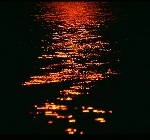IWhen an image “enters” your camera, it comes through your lens. Very basic, but also important.
All the nice options of your camera will be of little help, if there’s a problem with your lens.
Actually, it may be better to save some money when deciding what camera body you want to buy and reserve it for a good lens.
If you do not buy a camera with exchangeable lenses, lens quality is even more important - the only way to get a better lens then is to buy a new camera!
Read some tests and make sure you know what you want.
Lens Quality
There are many factors that make up a quality lens:
- sharpness
- contrast
- colours
- distortion
- coating to reduce lens flare
- mechanical (build) quality
- “vignetting” (image gets darker in the corners)
Other factors may be weight of the lens, or additional features like an inbuilt image stabiliser, a lens shift or motor.
You can’t really test the above factors yourself, so before you buy a lens, read the reviews in journals and on the web.
Look at it. Feel it. Is it too heavy? Does it feel comfortable? Are the markings easy to read. Ask whether you can try it before actually buying it. Then test it with your camera and you favourite film (if you have not gone digital yet).
Oh, and set yourself a budget. Otherwise those journal reviews could make you spend much more than you intended.
Focal Range
What kind of images do you want to shoot? If you are into portraits, an 80 mm or 100 mm lens usually is best. If you want to take pictures of birds and widelife, then you’ll need a strong tele lens (300-500 mm minimum) and a tripod.
If you love landscapes, an extreme wide-angle may help you to produce amazing shots with a very prominent foreground and an almost infinite depth of field.
If you love to take pictures of small objects like flowers, butterflies or insects, you should buy a lens with a macro setting.
If you want to travel light and not carry around many different lenses, then presumably a good zoom lens is right for you. A 28-200 mm lens should cover most situations.
Oh and by the way: if you can get close to a subject, it is usually better to use a shorter focal length than a tele lens. The reason is simple: the air between you and the object also has an optical effect! Pictures taken with a strong tele may lack in contrast and brilliance.
Also, try to avoid teleconverters. They may be useful in wildlife photography, but usually a lens combined with an extender usually is not quite as good as a lens with the same focal length. After all, every lens has been carefully optimised and the extender interferes with this calculation.
more
Lens Speed
If you are into available light photography, chances are you’ll need a fast lens to shoot in the early morning or late evening (unless you always carry a tripod).
In many buildings like churches or museums, you actually have little choice as you usually will not be allowed to use a tripod or a flash.
So what is “fast” in terms of a lens? Is there something such as lens speed? Yes, there is. Look at your lens from the front.
You’ll see some numbers there, here’s an example for a low-tech zoom:
Ø 52. The diameter, important for fastening a filter.
35-80 mm. The focal range. In this case it’s a low-wide angle to low tele lens.
1:3.5-4.5. That’s it! This is your “speed” marking.
Actually it tells you how wide you can open your lens, letting in more light the smaller the number is. For zoom lenses, this often depends on focal length.
In the example, the lens can be opened to “3.5” at 35 mm but only to “4.5” at 80 mm. This definitely is not a “fast” lens meaning that you’ll sooner have to use a tripod in low-light situations (or use a “faster” film instead). Zoom lenses are usually less fast than fixed focus lenses.
On my 50 mm lens, I can read: 1:1.4 (22) which is pretty fast ,meaning I can open up my lens much more widely than with the above zoom.
The measure of the opening is called “aperture”. The lower the number, the greater the “aperture” or opening of the lens.
It also means that I can close it down to an aperture of “22”, thereby dramatically reducing the amount of light that enters. This will be useful in normal daylight, as it allows me to increase depth of field. (Traditionally the following aperture settings may exist, but I don’t know any lens that covers all of them: f/1, f/1.4, f/2, f/2.8, f/4, f/5.6, f/8, f/11, f/16, f/22, f/32, f/45)
If taking photographs in low-light is not what you are after, then a maximum aperture of 2.8 or 3.5 as you find it in most zoom lenses should be enough. You can always buy another dedicated fixed focus lens (if you own a camera with exchangeable lenses)

